In the 1920s, a revolutionary group of composers from the Rio neighborhood of Estácio de Sá that included Ismael Silva (1905-1978), Bide (Alcebíades Barcelos, 1902-1975), Armando Marçal (1902-1947), Nilton Bastos, and others charted a new course for the fledgling genre. In contrast to the maxixe-based sambas of Donga and Sinhô, the Estácio sambas featured a type of guide rhythm, or time-line, of Bantu African origin known in Rio as teleco-teco. This pattern — often played on the four-string cavaquinho or small frame drum called a tamborim — has come to shape the rhythmic structure of the genre ever since.
The Estácio composers also transformed their local bloco carnavalesco (informal street Carnaval group) into the first escola de samba or “samba school,” called Deixa Falar (Let Them Talk), founded on August 12, 1928. The name “Let Them Talk” was a reference to the rivalry that existed among Carnaval groups from different neighborhoods. Located near a school that graduated teachers who worked in the City school district, Deixa Falar was called a “samba school” because its leaders — considered professors of this new type of samba — were said to graduate sambistas. The term “samba school” conferred more respectability on the blocos from the favelas and working-class districts — which until that point were not allowed to parade downtown during Carnaval.
Deixa Falar sparked a revolution, and many other samba schools emerged, including Estação Primeira de Mangueira and Portela (founded in 1929 and 1935, respectively) — two of the oldest-surviving and most venerable samba schools of Rio today. The first unofficial samba school parade competition was held in 1932 in Praça Onze. In 1935, the federal Getúlio Vargas government officially recognized the samba schools and sanctioned them to parade in downtown Rio.
Look

source
Armando Marçal, Paulo Barcelos, and Alcebíades Barcelos (Bide) — some of the founders of Deixa Falar — pose among pastoras, female singers/dancers of the school.

sourceIsmael Silva, one of the founders of Deixa Falar and an important early sambista, with his guitar, at the Festa da Senhora da Penha, a popular festival.
sourceOswaldo Boi de Papoula, 1st President of Deixa Falar, next to Ismael Silva.
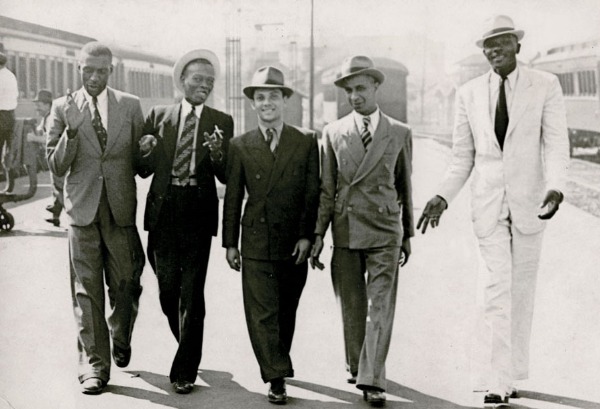
Pioneering sambistas and founders of some of the earliest samba schools looking sharp in the Rio suburb of Engenho de Dentro. From Left to Right: Paulo Benjamin de Oliveira (Paulo da Portela), a founding member of Portela; Heitor dos Prazeres, a founding member of Portela and Estação Primeira de Mangueira; Gilberto Alves; and Alcebíades Barcelos (Bide) and Armando Marçal, both founding members of Deixa Falar.
Watch

Black Orpheus (DVD)
An award-winning 1959 film by French director, Marcel Camus, that recasts the Greek myth of Orpheus and Eurydice in the context of a favela in Rio during Carnaval. The batucadas (samba percussion pieces) from the soundtrack — performed by Mangueira, Portela, and Salgueiro — are among some of the oldest recordings of Rio's samba schools. The film has remained one of the single most important vehicles for the popularization of Brazilian music throughout the world.
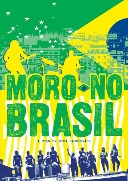
Moro No Brasil (DVD)
An excellent documentary film from 2002 that covers a variety of influential Brazilian musical styles. Includes recent footage from a rehearsal of Mangueira, one of Rio's oldest samba schools, founded in 1929.
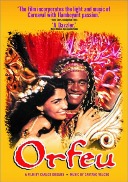
Orfeu (DVD)
A retelling of the Black Orpheus story from a more contemporary perspective (late 1990s) by acclaimed Brazilian director, Carlos Diegues. Includes original music by Caetano Veloso, one of Brazil’s most celebrated popular musicians and composers.

The Mystery of Samba (DVD)
A spectacular documentary film from 2008 featuring the elder members (Old Guard) of another one of Rio’s most venerable samba schools — Portela. Also featuring singer Marisa Monte and samba legends Paulinho da Viola and Zeca Pagodinho.
Samba New York! – Bateria 101
An introduction to the some of the basic instruments and rhythms of the bateria by one of the top samba schools in the U.S.
Read
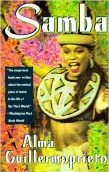
Samba
A riveting account of the author’s experience living in the Mangueira favela (shantytown slum) and parading with the Mangueira Samba School in the late 1980s. Includes a chapter on samba’s early history in Rio.
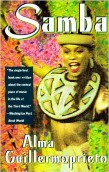
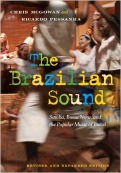
The Brazilian Sound
One of the most comprehensive books on Brazilian popular music in English with an excellent chapter on samba.
Learn More
For Lifelong Learners
DISCUSSION Ideas
Discuss
• Listen to the Radio Focus featured near the top of this page. Compare the sounds and instruments of early samba to the samba school sounds that emerged in the 1920s and started to be recorded in the 1930s.
Explore
• Why weren’t the samba schools officially allowed to parade in downtown Rio until 1935? Use the search terms “racism in Brazil” to learn more about racial divides in that country.
• Watch the movie Black Orpheus to experience the sights and sounds of Carnaval in the favelas.
• Watch the Samba New York! – Bateria 101 video featured above to learn some of the basic instruments and rhythms of the bateria by one of the top samba schools in the U.S. Try them yourself on any surface that is handy. A plastic fork and a coffee mug work quite well!
For Students
Teaching Ideas
Discuss
• Listen to the Radio Focus featured near the top of this page. Compare the sounds and instruments of early samba to the samba school sounds that emerged in the 1920s and started to be recorded in the 1930s.
Explore
• Why weren’t the samba schools officially allowed to parade in downtown Rio until 1935? Give students time to mine the Internet to learn more about racial divides in that country. The search terms “racism in Brazil” provide high-quality search results.
• Have students view selected segments of the movie Black Orpheus to experience the sights and sounds of Carnaval in the favelas.
• Gather household items such as jars containing a small amount of uncooked rice or beans, coffee mugs, plastic forks, chopsticks, etc. Then watch the Samba New York! – Bateria 101 video featured above to learn some of the basic instruments and rhythms of the bateria by one of the top samba schools in the US. Try them yourself on any surface that is handy. Alternatively, invite a local percussionist or students from the school band to help your students get the percussive feel of samba.